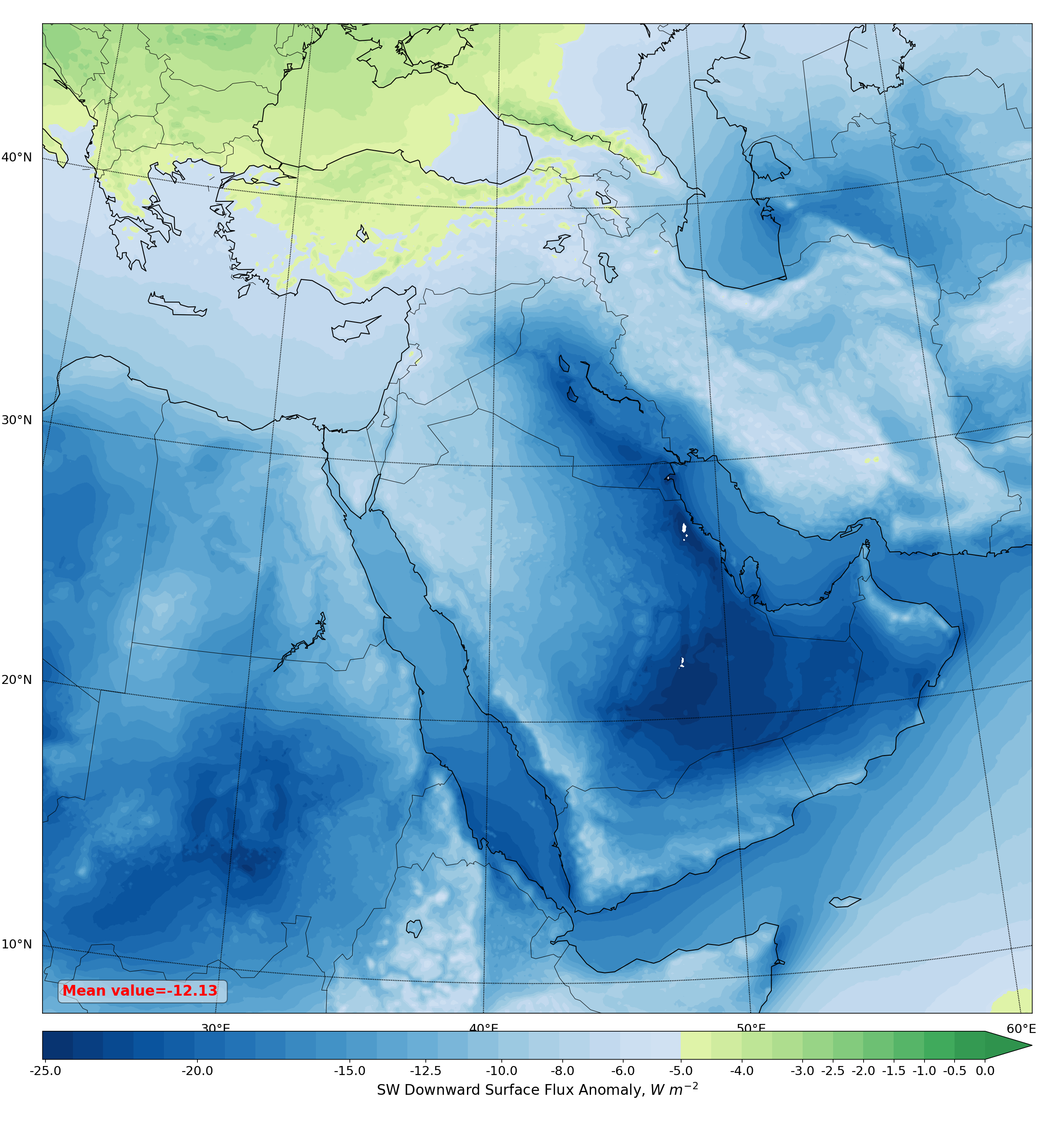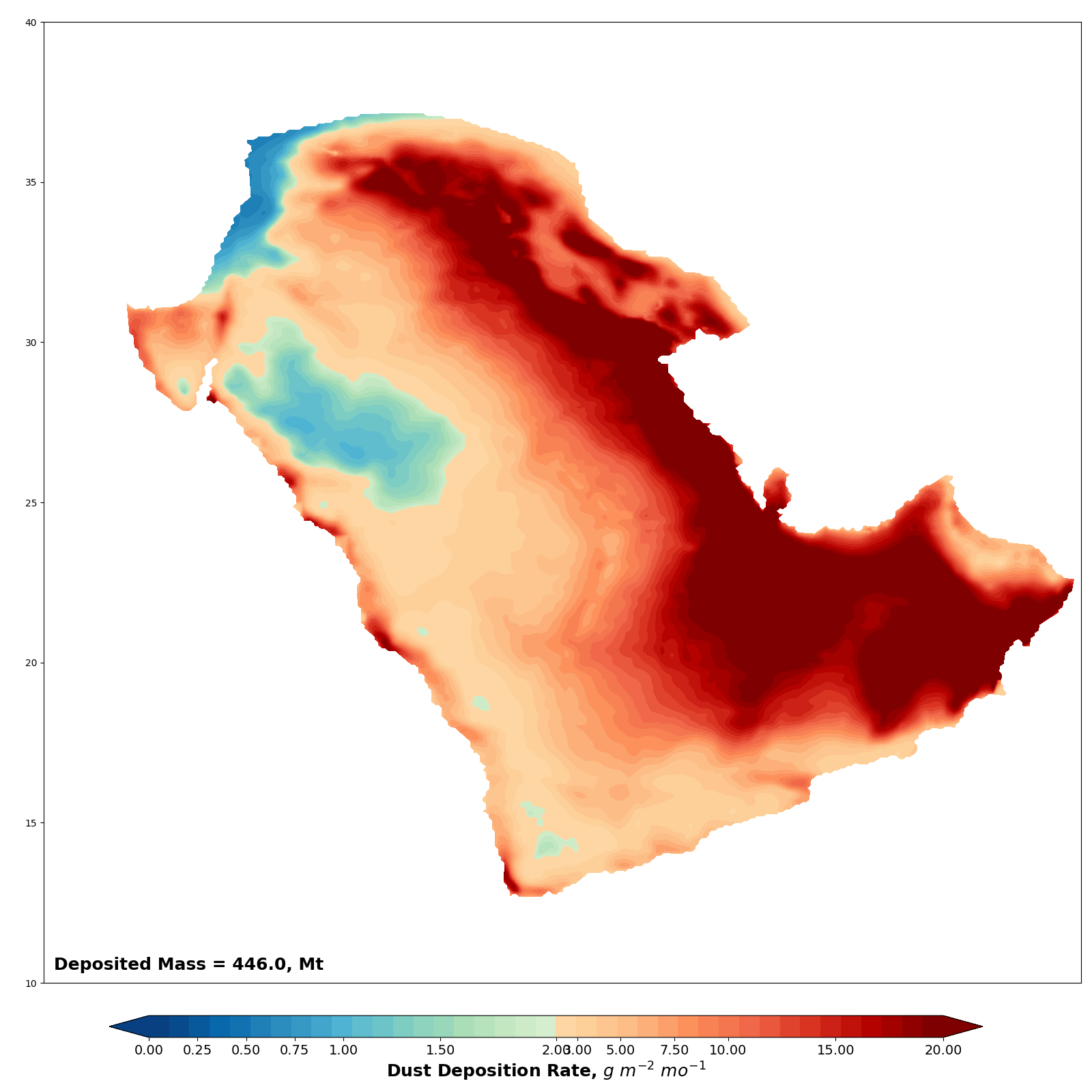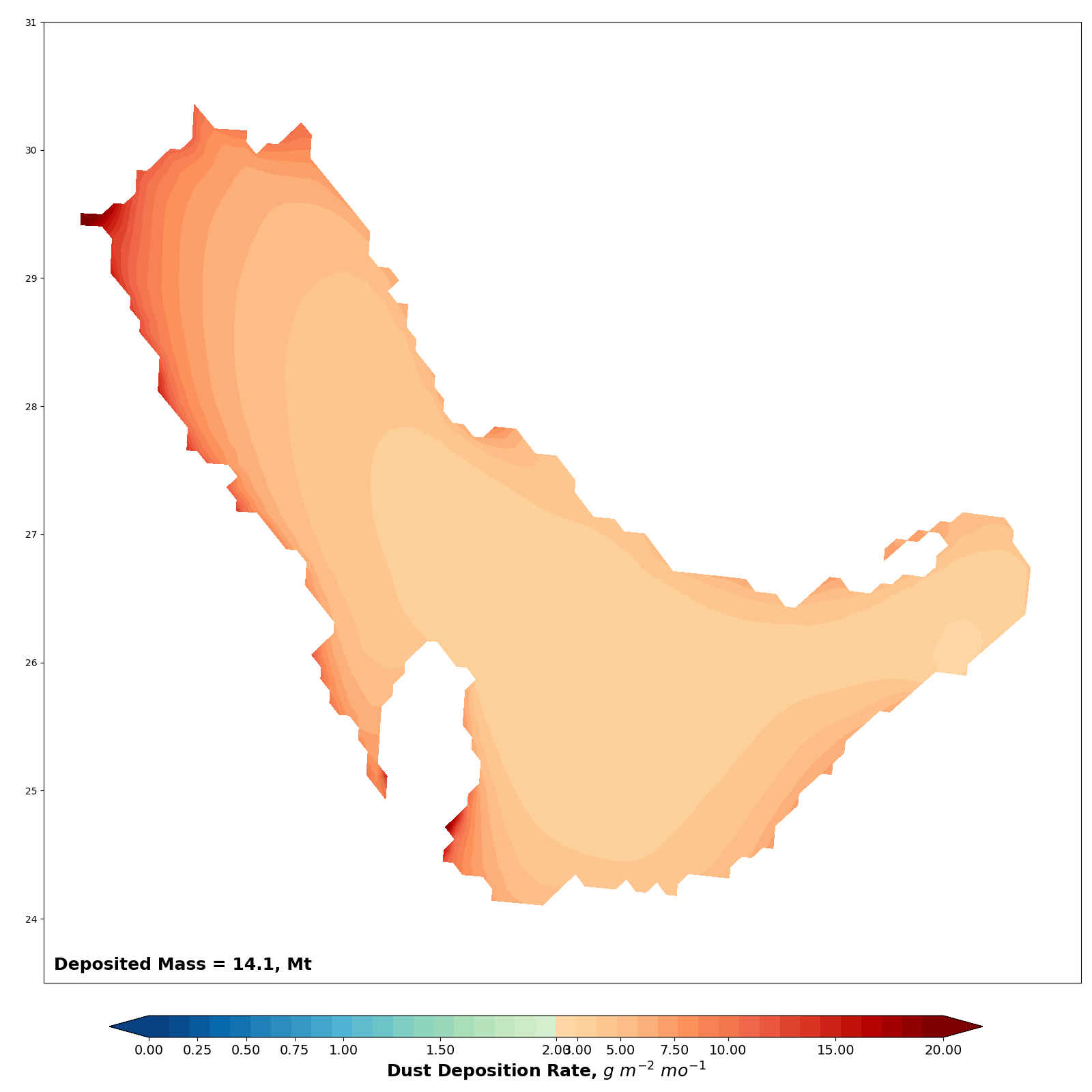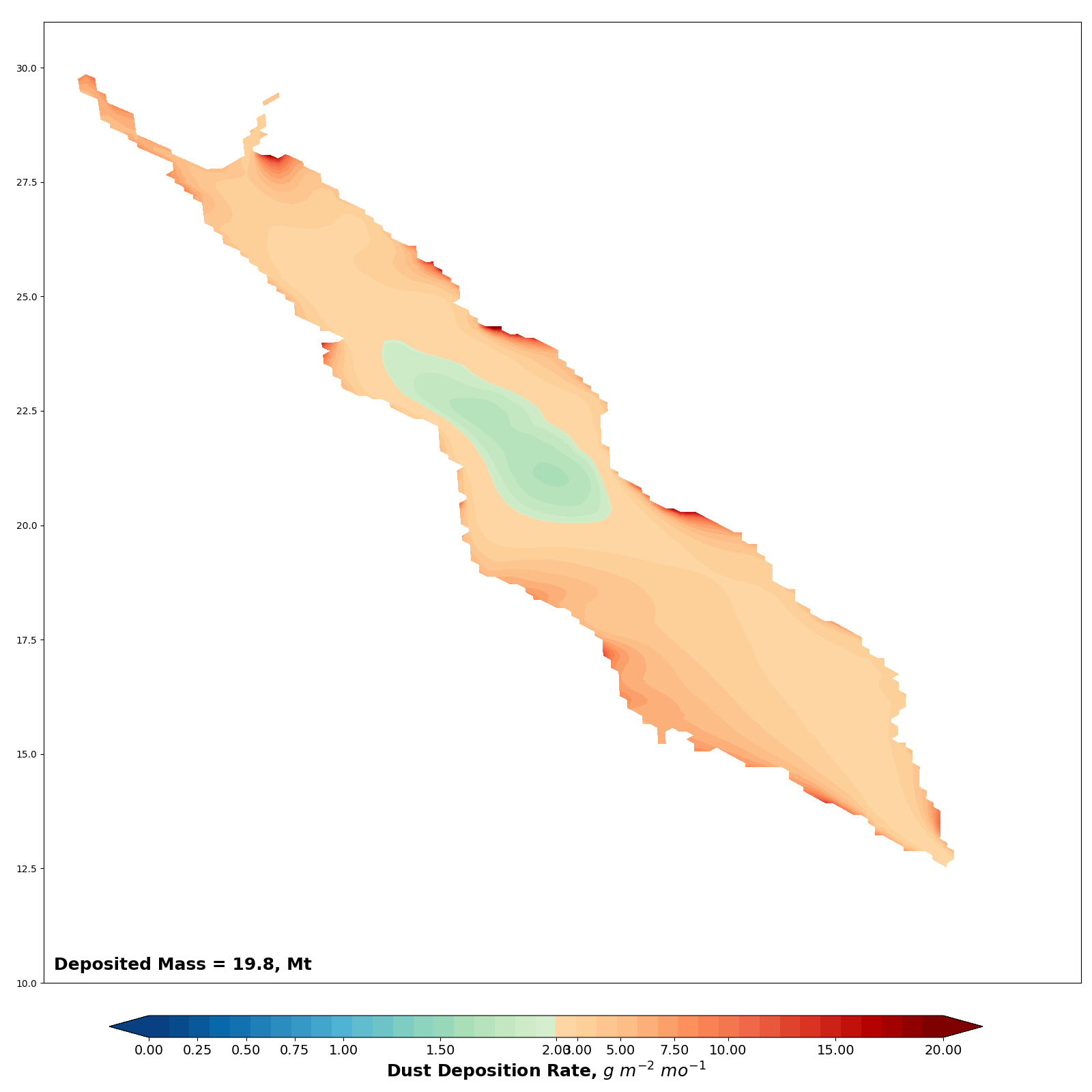KAUST researchers find dust clouds are three times larger than previously thought

Change in solar radiation due to dust deposition over the Arabian Peninsula found by the model.
In a new study in the Journal of Geophysical Research: Atmospheres, KAUST researchers use refined mathematical models to show that dust in the region maybe three times larger than previously thought, which has a profound impact on the deployment of solar technology.
Dust is an effective way to move minerals across sea and land, acting as a fertilizer by distributing nutrients long distances. At the same time, it can be detrimental to infrastructure and technology, which is why an accurate understanding of its effects will assist in national policies for sustainability.
Current mathematical models used by scientists primarily analyze dust particles of fine size (less than ten micrometers) and are not effective at predicting the impact dust particles of coarse or gigantic size have. Using data collected by instruments set up by KAUST since 2012 and NASA satellites, the new study finds estimates from previous models underestimate dust deposition and emission by three times. Further, by incorporating the new data, the KAUST model shows that the larger particles contribute to more than 80% of dust mass on land, where most solar technology is deployed.

Modelled dust deposition over Arabian Peninsula.
This dust diminishes the effectiveness of solar technology, with the study estimating a 15% and 45% loss in efficiency (assuming a weekly cleaning cycle) for solar panels deployed on the west and east coasts of Saudi Arabia, respectively.
The loss comes from two means. First is the dust that settles on, or soils, the technology itself, blocking solar radiation. At the same time, dust in the atmosphere can diminish solar radiation from reaching the instrument. The efficiency loss from deposited dust was about twice as high as that from radiative dust in the atmosphere.

Modelled dust deposition over Arabian Gulf.
"Accurate dust modeling and dust forecasting has several important policy implications. To support Saudi Arabia's aggressive development of a sustainable economy, our work will contribute to the strategic deployment and maintenance of solar technology across the Kingdom," said KAUST Prof. Georgiy Stenchikov, who led the study.

Modelled dust deposition over Red Sea.
KAUST research scientist Dr. Mokhammad Suleiman Mostamandi served as a first author. KAUST research scientists Dr. Sergey Osipov, Dr. Ilia Shevchenko, and Dr. Alex Ukhov also made major contributions to the study. As did Professor Emeritus Johann Engelbrecht of the Desert Research Institute in the United States.

